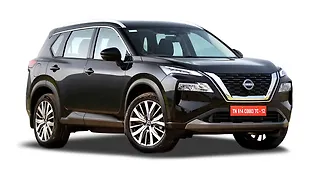What is it?

Why would I buy one?
Funky styling, decent equipment levels
Why would I avoid one?
Paucity of dealer network, No automatic option

The Kicks is supposed to be Nissan's answer to the burgeoning compact SUV segment. With almost every manufacturer having one, Nissan was lagging way behind with just the dated Terrano in its arsenal. However according to its latest strategy, Nissan will be bringing in products from their international portfolio and they are starting with the Kicks. Even though the Kicks is present in international markets, the Indian model has been tailored to suit the local conditions which we shall explore further.

Design-wise the Kicks is a smart looking car. While it doesn’t seem so in the photos, in the flesh the Kicks comes across as quite a large car with the length spanning over 4.3 meters. In fact, it is longer and wider than the current benchmark, the Hyundai Creta. While most of its breed are termed as 'Crossovers', Nissan prefers to call the Kicks a 'Progressive SUV' and we kind of agree because with that massive ground clearance and muscular stance, it does look more SUV than crossover.

The front gets the Nissan V-motion grille, a butch looking skid-plate and nicely placed fog lamps that also act as cornering lamps. The side profile is all about those pronounced wheel arches as well as the floating roof that seems to be a trend now. It is from the rear that the Kicks really looks good. Unlike most SUVs which end without much drama, the Kicks gets quite a rakish rear windscreen too. The protruding boomerang tail-lamps look fantastic and round up one of the funkiest heine's out there. Overall, the Kicks comes across as a very smart looking car that is sure to connect with the millenials that Nissan is looking to rope in.
How is it on the inside?

Nissan has made sure that the Kicks feels welcoming from the inside. There is plenty of leather and the dual tone brown and black theme gives a rich feel. What is immediately noticeable is that Nissan has used soft touch materials abundantly especially on the center of the dashboard, door armrest and the center armrest. The cab forward design means the dashboard extends quite a bit making the cabin feel roomier. Another brilliant addition is the 8-inch touch screen infotainment system which is chiseled beautifully and works well too.

The steering wheels is small and fits very well in the palms but gets only cruise control settings and surprisingly they aren't even backlit. The audio controls are located on the stalk behind the steering wheel and are lifted straight off the Renault Captur/Duster. Talking about borrowed parts, the climate control dials, window switch panels and a few other things can be seen in the Captur as well.

The instrument console too has taken cues from other Renault models but gets a new layout. The combination meter gets a digital speedo in the centre combined with an analogue tacho and fuel guage. You also get an exhaustive list of information like average fuel consumption, distance to empty and then some.

While Nissan has done well with the overall levels of quality, plastic quality still suffers in some places. Even the switches like the power window buttons and the climate control dials lack any tactile feel.

Seating in the Kicks is a comfortable affair. The front seats are large and very comfortable with very good bolstering. The rear too has plenty of legroom and being a wide car, the Kicks will seat three with ease. Under thigh support though is lacking and the Kicks could do with more of it.

With the boot capacity rated at 400-litres, it is the not the best out there but not too bad either. Overall, Nissan has done well to step up the game when it comes to the interiors and features.
How does it drive?

Another major change for the Indian spec Kicks is the platform. The Indian car uses the tried and tested underpinnings from the Captur and the Duster and the same 1.5-ltre DCi K9K engine. Power and torque ratings remain identical too at 109bhp @3850 rpm and 240Nm @ 1750 rpm. What is different though is the NVH levels which Nissan has worked hard on. Driven back to back against the other cars from the family, the Kicks feels much more refined.

Performance is nothing exceptional but more than adequate. The meaty midrange means overtaking and cruising at triple digit speeds is an easy affair. However there is noticeable lag below 2000 rpm and at times the car judders even while tackling a speed-breaker in second gear. While the gear shifts are precise, the clutch is slightly on the heavier side.

The Kicks was a joy to drive on the well paved roads of Gujarat. The suspension is extremely pliant and feels almost European in nature. Bad sections are also handled with aplomb and do not upset the car's balance. The Kicks is set up quite tall at 210mm so it won't exactly carve corners, but even then it does not roll easily and things are pretty controlled even when you are pushing it.
Should I buy one?

As a car, the Kicks does not do too much wrong. It looks smart, has the right proportions and is sure to take notice for all the right reasons. Nissan has done well with the interiors too. Plenty of plush leather, a big touchscreen infotainment system that sounds the part and gets Apple Car Play as well as Android Auto.

Apart from that it also gets auto headlamps, auto wipers and an ingenious new feature which is a 360 degreee surround view that is absolute boon when parking in tight spots. The only negatives we see are the borrowed bits that don't really blend well with the newly inherited plushness. Also, the lack of an automatic transmission is a bit of a handicap considering sales for AT SUVs are on the rise.
Where does it fit in?

We expect the Kicks to be priced in the range of Rs 10 lakh to Rs 15 lakh. This will put it on the warpath with the top end version of the Tata Nexon and the likes and also the mid-level variants of the Creta along with the Renault Captur. We think Nissan needs to price the Kicks aggressively to really give it the numbers it deserves.
Photos: Kapil Angane


































